#grafton underwood
Text
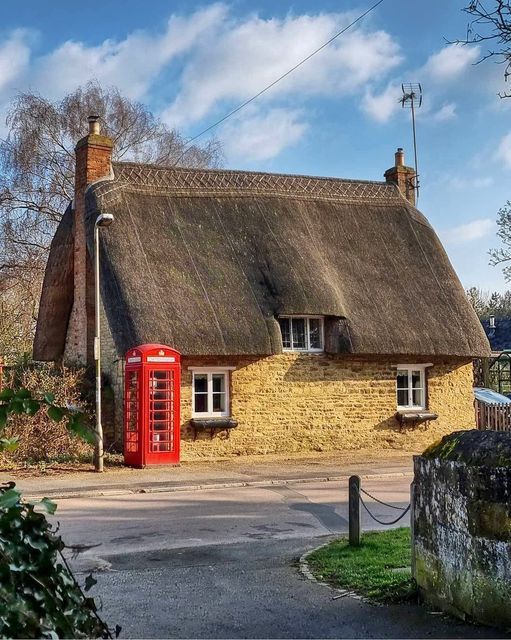
Telecommunications as they once were, in Grafton Underwood
#Grafton Underwood#Northamptonshire#English villages#UK#thatched roof#stone cottage#red phone box#TV antenna
66 notes
·
View notes
Text
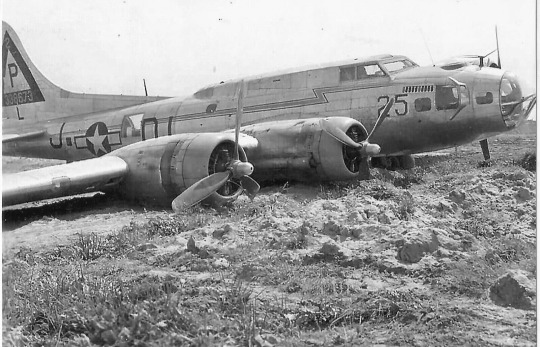
Boeing B-17G Flying Fortress (43-38673) in the mud after the right landing gear collapsed during a landing accident at Erding, Germany
Date: July 28, 1945
history on this bomber: "Accepted by USAAF August 31, 1944. United Air Lines, Modification Center #10, Cheyenne Municipal Airport, WY August 31, 1944. 302nd Base Unit (Staging Wing), Hunter Field, Savannah, GA September 5, 1944. 1377th Base Unit (North Atlantic Wing, Air Transport Command), Grenier Field (Station 16), Manchester, NH Sep 15, 1944. 545th Bomb Squadron [JD*L], 384th Bomb Group, Grafton Underwood (Station 106), Northamptonshire 0ctober 28, 1944. {first combat mission October 30, 1944). (63 missions). Converted for trooping, stripped of all armament and turrets, capable of carrying thirty passengers on benches installed in the waist and bomb bay. 384th Bomb Group, Istres (Station 195), Marseille, France. Participated in the Green Project which was the USAAF solution to expedite the return of troops to USA (code #54). It called for the round-the-clock airlift of troops from Istres, France, to Casablanca, French Morocco, the initial leg of their journey home. From Casablanca, Air Transport Command's aircraft completed the journey and flew the troops to the United States. A secondary task of the Green Project included flying French citizens who had been in exile during the war on the return leg from NAS Port Lyautey, French Morocco to Istres. The Green Project operated from June 15, 1945 to September 10, 1945. Landing accident at Erding (R-91), Germany July 28, 1945. The right landing gear collapsed and ground looped into the mud. Salvaged 0ctober 4, 1945"
- information from American Air Museum in Britain: UPL 60868
#Boeing B-17 Flying Fortress#B-17#bomber#USAF#crash landing#World War II#World War 2#WWII#WW2#WWII History#History#July#1945#United States Army Air Corps#US Army Air Corps#Army Air Corps#Air Corps#USAAC#my post
154 notes
·
View notes
Text
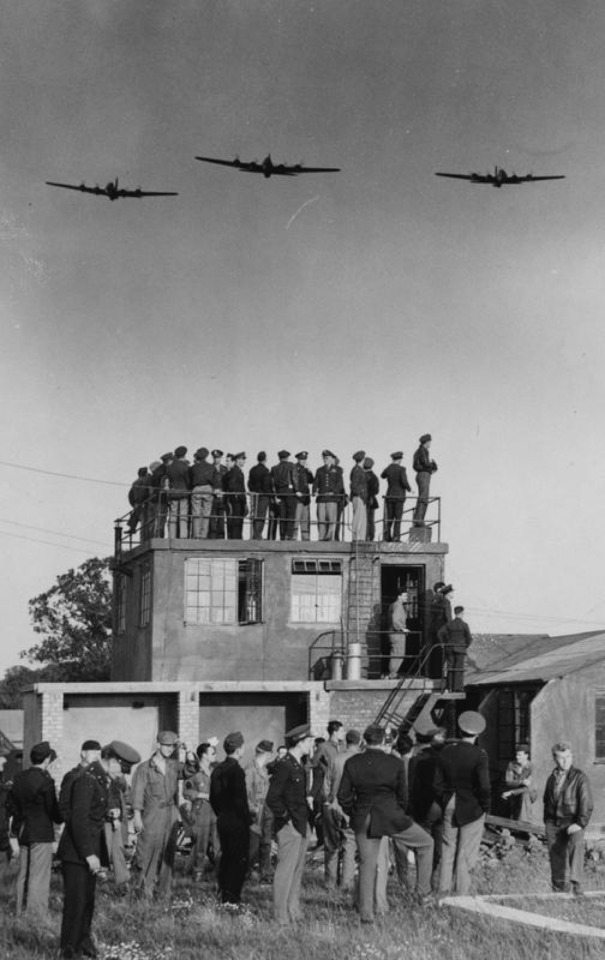
Next time we'll profile most of the 12 B-17s that flew mission 1. I think you'll like this! Photo, personnel of RAF and US look on as Mission 1 returns to Grafton Underwood. #WWII
@Francesbekafigo via X
30 notes
·
View notes
Text

B-17E named “Dixie Demo” of the 414th BS, 97th Bomb Group at RAF Grafton Underwood 1942
25 notes
·
View notes
Text
World War II, 'Target Berlin'
Edward Field - USAAF 8th Air Force, b.1924.
It was over Target Berlin the flak shot up our plane
just as we were dumping bombs on the already
smoking city
on signal from the lead bomber in the squadron.
The plane jumped again and again as the shells burst
under us
sending jagged pieces of steel rattling through our
fuselage.
It was pure chance
that none of us got ripped by those fragments.
Then, being hit, we had to drop out of formation
right away
losing speed and altitude,
and when I figured out our course with trembling hands
on the instruments
(I was navigator)
we set out on the long trip home to England
alone, with two of our four engines gone
and gas streaming out of holes in the wing tanks.
That morning at briefing
we had been warned not to go to nearby Poland
partly liberated then by the Russians,
although later we learned that another crew in trouble
had landed there anyway,
and patching up their plane somehow,
returned gradually to England
roundabout by way of Turkey and North Africa.
But we chose England, and luckily
the Germans had no fighters to send up after us then
for this was just before they developed their jet.
To lighten our load we threw out
guns and ammunition, my navigation books, all the junk
and, in a long descent, made it over Holland
with a few goodbye fireworks from the shore guns.
Over the North Sea the third engine gave out
and we dropped low over the water.
The gas gauge read empty but by keeping the nose
down
a little gas at the bottom of the tank sloshed forward
and kept our single engine going.
High overhead, the squadrons were flying home in
formation
—the raids had gone on for hours after us.
Did they see us down there skimming the waves?
We radioed our final position for help to come
but had no idea if anyone
happened to be tuned in and heard us,
and we crouched together on the floor
knees drawn up and head down
in regulation position for ditching;
listened as the engine stopped, a terrible silence,
and we went down into the sea with a crash,
just like hitting a brick wall,
jarring bones, teeth, eyeballs panicky.
Who would ever think water could be so hard?
You black out, and then come to
with water rushing in like a sinking-ship movie.
All ten of us started getting out of there fast:
there was a convenient door in the roof to climb out by,
one at a time. We stood in line,
water up to our thighs and rising.
The plane was supposed to float for twenty seconds
but with all those flak holes
who could say how long it really would?
The two life rafts popped out of the sides into the water
but one of them only half-inflated
and the other couldn’t hold everyone
although they all piled into it, except the pilot,
who got into the limp raft that just floated.
The radio operator and I, out last,
(did that mean we were least aggressive, least likely
to survive?)
we stood on the wing watching the two rafts
being swept off by waves in different directions.
We had to swim for it.
Later they said the cords holding rafts to plane
broke by themselves, but I wouldn’t have blamed them
for cutting them loose, for fear
that by waiting for us the plane would go down
and drag them with it.
I headed for the overcrowded good raft
and after a clumsy swim in soaked heavy flying clothes
got there and hung onto the side.
The radio operator went for the half-inflated raft
where the pilot lay with water sloshing over him,
but he couldn’t swim, even with his life vest on,
being from the Great Plains—
his strong farmer’s body didn’t know
how to wallow through the water properly
and a wild current seemed to sweep him farther off.
One minute we saw him on top of a swell
and perhaps we glanced away for a minute
but when we looked again he was gone—
just as the plane went down sometime around then
when nobody was looking.
It was midwinter and the waves were mountains
and the water ice water.
You could live in it twenty-five minutes
the Ditching Survival Manual said.
Since most of the crew were squeezed on my raft
I had to stay in the water hanging on.
My raft? It was their raft, they got there first so they
would live.
Twenty-five minutes I had.
Live, live, I said to myself.
You’ve got to live.
There looked like plenty of room on the raft
from where I was and I said so
but they said no.
When I figured the twenty-five minutes were about up
and I was getting numb,
I said I couldn’t hold on anymore,
and a little rat-faced boy from Alabama, one of the
gunners,
got into the icy water in my place,
and I got on the raft in his.
He insisted on taking off his flying clothes
which was probably his downfall because even wet
clothes are protection,
and then worked hard, kicking with his legs, and we all
paddled,
to get to the other raft
and tie them together.
The gunner got in the raft with the pilot
and lay in the wet.
Shortly after, the pilot started gurgling green foam from
his mouth—
maybe he was injured in the crash against the
instruments—
and by the time we were rescued,
he and the little gunner were both dead.
That boy who took my place in the water
who died instead of me
I don’t remember his name even.
It was like those who survived the death camps
by letting others go into the ovens in their place.
It was him or me, and I made up my mind to live.
I’m a good swimmer,
but I didn’t swim off in that scary sea
looking for the radio operator when he was
washed away.
I suppose, then, once and for all,
I chose to live rather than be a hero, as I still do today,
although at that time I believed in being heroic, in
saving the world,
even if, when opportunity knocked,
I instinctively chose survival.
As evening fell the waves calmed down
and we spotted a boat, not far off, and signalled with a
flare gun,
hoping it was English not German.
The only two who cried on being found
were me and a boy from Boston, a gunner.
The rest of the crew kept straight faces.
It was a British air-sea rescue boat:
they hoisted us up on deck,
dried off the living and gave us whisky and put us
to bed,
and rolled the dead up in blankets,
and delivered us all to a hospital on shore
for treatment or disposal.
None of us even caught cold, only the dead.
This was a minor accident of war:
two weeks in a rest camp at Southport on the Irish Sea
and we were back at Grafton-Underwood, our base,
ready for combat again,
the dead crewmen replaced by living ones,
and went on hauling bombs over the continent of
Europe,
destroying the Germans and their cities.

Picture shows the B-17 Flying Fortresses of this bomber group on a bombing run.
#berlin#usaaf#poetry#edward field#bombing#shot down#aircrew#north sea#survival#choice#heroism#alabama#nameless#memory#WWII#384th Bombardment Group#B-17#8th air force#soux city#iowa#kettering#grafton underwood
4 notes
·
View notes
Photo

King Condor of the 97th Bomb Group after a crash landing at Grafton Underwood, 1 August 1942. All the aircrew survived, although a truck driver was killed after being hit by the aircraft
49 notes
·
View notes
Note
jumping on that OC wagon: Susannah Norris
Aww Layton’s sharp shooting lady love.
Full Name: Susannah NorrisGender and Sexuality: cis, straightPronouns: she/her Ethnicity/Species: English, human. Birthplace and Birthdate: Near Grafton Underwood, February 1797Guilty Pleasures: Sleeping in and napping in the sun. Girl is running on fumes and believes napping is wasted on the youth. Poaching (shh don���t tell anyone). Playing cards and doing some light, discreet gaming. Secretly trying on Mary’s nicer clothes and looking at herself in the mirror. Stealing leftover bits of wine and brandy from Mary and Geoffrey. Phobias/Fears: General fears - spiders. One of her brothers brought home a big one from his travels as a sailor for the EIC and she was Not OK with it. Centipedes. Milipedes are fine, but she’s not fine with centipedes. What They Would Be Famous For: Having a fantastic shot - like Annie Oakley of the midlands. Saving various members of the former Imperial Court from certain death by fairy. What They Would Get Arrested For: Poaching and being a recipient of smuggled in goods from wartime France. OC You Ship Them With: Layton! OC Most Likely To Murder Them: No one. Maybe George Preston if he found out she was poaching on his land. Favorite Movie/Book Genre: She likes love poetry. The more sweeping and romantic the better. Also she loves a good romp such as anything written by Mrs. Radcliffe. Scandalous, sexy books like The Monk are also a favourite. She hides them in her room so no one knows. Least Favorite Movie/Book Cliche: Not keen on educational/books for your mental betterment. Though she likes these new-fangled every-day cookbooks that are being developed as they’re handy. Her mother bought her a book on housekeeping when she went to be a maid and Susannah thought it was stupid and has written her corrections down the margins of it. Talents and/or Powers: Well she’s a gifted shot. She’s also discreet, a good spy. Can be quiet and unnoticeable when she needs to be. Why Someone Might Love Them: Because she’s an unassuming powerhouse. Also has a quick wit and a satirical eye - though she keeps that mostly to herself. She can be fiercely loyal and has a tendency to view certain things like “laws” and “civility” as merely guidelines. She tends to form instant bonds when she decides she likes someone and dives headfirst into vulnerable intimacy. Why Someone Might Hate Them: She has little respect for most people, you have to earn it which in early 19th century England causes problems. Though she is good at keeping her opinions to herself most of the time. The satirical eye can make her mean to people. How They Change: As a very minor character we don’t really see her change much in the stories. This might change (aha) as things progress. Why You Love Them: She’s got some chutzpah. She’s an interesting mix of caustic and sweet.
Thank you! :D
3 notes
·
View notes
Photo
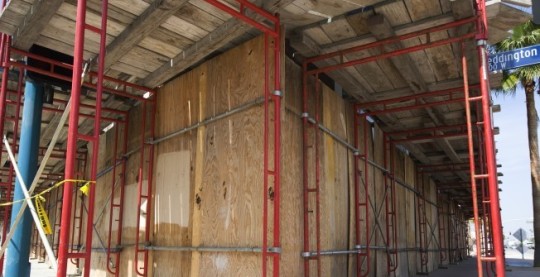
Professional Scaffolding Company in Grafton Underwood #Grafton #Underwood https://t.co/GdRg496nYe
Professional Scaffolding Company in Grafton Underwood #Grafton #Underwood https://t.co/GdRg496nYe
— Scaffolders Near Me (@scaffoldersuk) April 24, 2020
0 notes
Photo

This window, titled "Coming Home", pictures a 384th Bomb Group B-17 returning from a mission. It is in St. James Church in Grafton Underwood.
9 notes
·
View notes
Photo


RARE DAVY JONES PICTURE UNEARTHED “I’d like to blow on your horn...” A wonderful picture of Davy Jones playing his white Grafton saxophone with the first line-up of The Kon-rads has surfaced. The young Jones (later to become a solo singer in his own right under the name of David Bowie), is pictured next to George Underwood (later to become a solo singer in his own right under the name of Calvin James), who took vocal duties on this occasion. In his early teens Bowie became keen on the jazz of John Coltrane. For Christmas 1961 his father bought him this white acrylic Grafton alto sax. It used new plastics technology, and cost £55, about half the cost of a brass instrument. Bowie later told the BBC that he asked his father to lend him money to buy himself a saxophone. His father bought him the saxophone but made David agree to pay him back with the money he made from his part time job. The picture is up for auction over at The Saleroom (LOT 61) where you can view a larger version: http://smarturl.it/KonradsGardenPic #TheKonrads #BowieSax
2 notes
·
View notes
Text
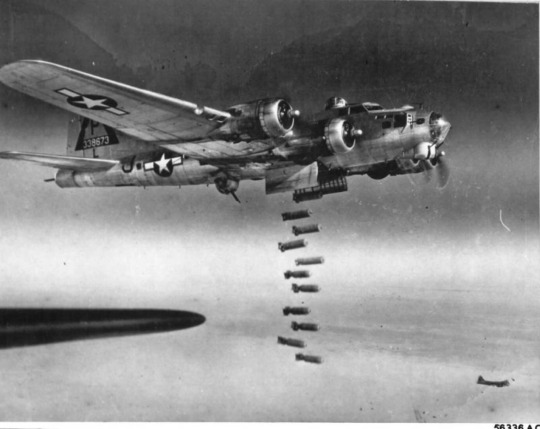
A 384th bomber from Grafton Underwood releases it bombs. The 384th flew 316 missions losing 159 a/c #MIA #WWII
@Francesbekafigo via X

5 notes
·
View notes
Video
SSgt Earl William Forslund of the Air Force, 305th Bombardment Group, 305th Operations Support Squadron, motto “Can Do”, served as a cryptographic tech 805 during WWII and the Korean War, 12301941-11301950. He was one of the oldest men in his unit having joined at 32, and was given the nickname ‘Grandma’. The 305th Bombardment Group activated 03011942 at Salt Lake City Army Air Base, UT and trained there, Geiger Field, WA and Muroc Army Air Field, CA. They travelled to Fort Dix Army Air Base, NJ where the ground unit Sailed on the Queen Mary on 09051942. They formed the RAF Grafton Underwood and were assigned the tail code “Triangle-G”. The unit received new Boeing B-17F Flying Fortress bombers that were deployed to the UK in October. The 305th Bombardment Group was one of the first VIII Bomber Command Boeing B-17 Flying Fortress units in England. Combat started on 11171942. In December they were transferred to RAF Chelveston. On 01271943 they participated in the 8th Air Force’s raid on Germany and pioneered bomber flying formations and procedures that became standard procedures for the 8th Air Force. The 305th Bombardment Group was one of the most decorated groups in the USAAF European Theatre; they received their first Distinguished Unit Citation for a mission in April 1943, and their second DUC for a mission on 01111944. The 305th Bombardment Group suffered the heaviest loss during the 10141943 Schweinfurt-Regensburg mission and were given a Nazi flag found flying in the city after it was captured in April 1945. Every year the 305th Bombardment Group held a reunion; in 1986 they held it on the Queen Mary. SSgt Forslund tried to go to as many reunions as he could, this being the last one he attended. His wife and him were in a car accident on their way home and passed away. This picture was taken from that reunion. To learn more about the 305th Bombardment Group go to: https://en.m.wikipedia.org/wiki/305th_Operations_Group https://www.instagram.com/p/B9Z0aTkJ6g6/?igshid=lyjmdo892w38
0 notes
Link
via Robert Haycroft RSS Feed
0 notes
Photo

Lady Drew of the 384th Bomb Group at Grafton Underwood, winter 1943-44
46 notes
·
View notes